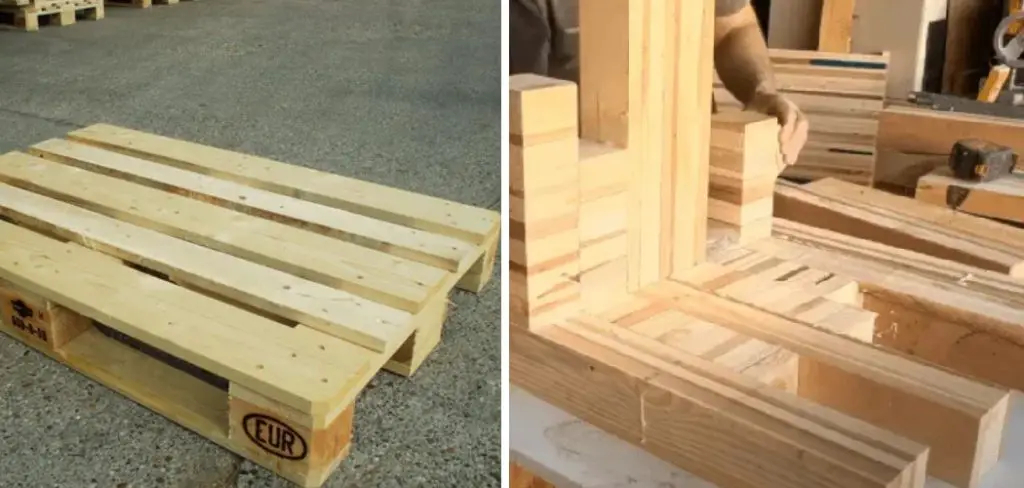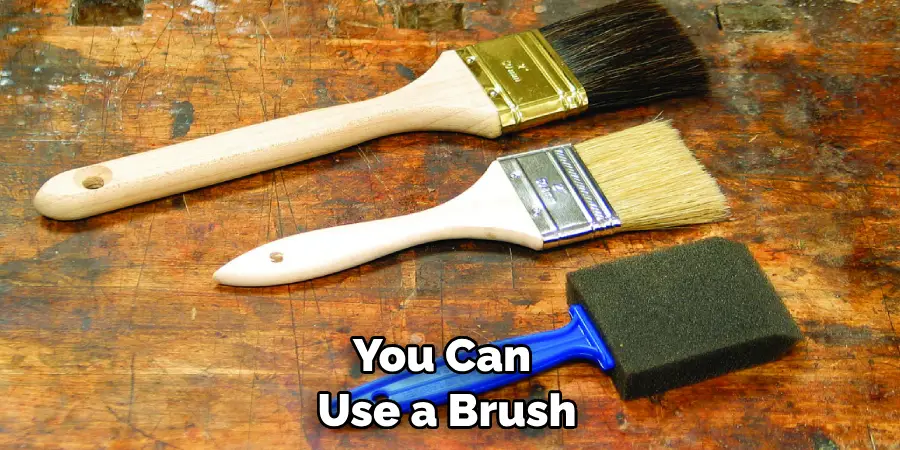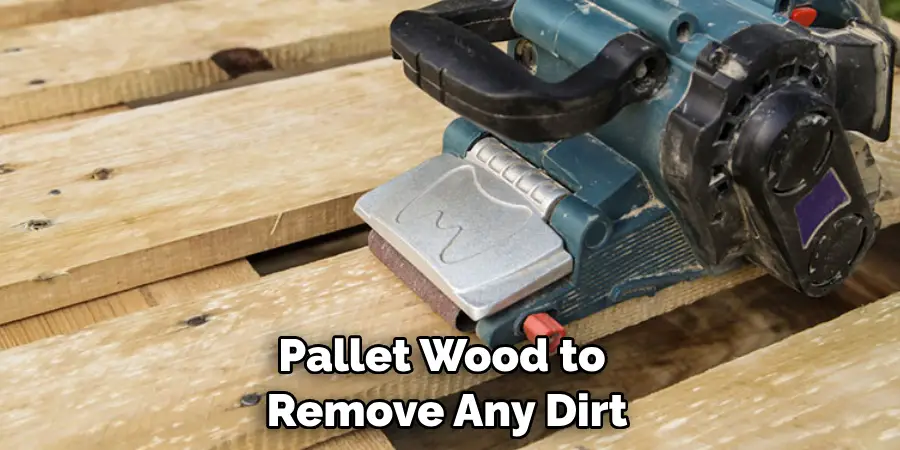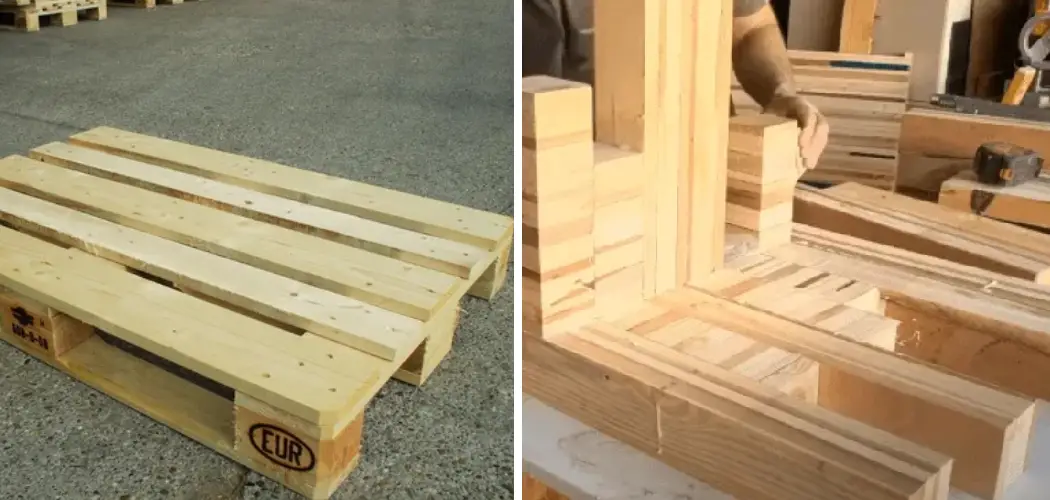Are you looking to give your outdoor space a rustic and unique look? Working with pallet wood is one great way of adding charm and character to any outdoor area. This inexpensive material offers endless possibilities for creative projects, from custom furniture pieces to cozy decorations. However, it’s important to consider the environmental factors that can damage untreated pallet wood when exposed outdoors.

In this blog post, we’ll guide you through all the steps of how to treat pallet wood for outdoor use so it can withstand weather conditions and last longer in your garden or patio!
Why Treat Pallet Wood for Outdoor Use?
Pallet wood is typically not treated with any protective coating, as its main purpose is to transport goods. This means that it’s vulnerable to the elements and can easily rot or warp when placed outdoors. If you want your pallet wood projects to withstand moisture, heat, and other environmental factors, treating the wood is necessary.
Moreover, treating pallet wood for outdoor use also helps to prevent any harmful chemicals from leaching into the soil or water. This is especially important if you’re using the wood for gardening projects or have a vegetable garden nearby. By treating the wood, you can ensure a safe and healthy environment for your plants and family.
Step-by-step Guidelines on How to Treat Pallet Wood for Outdoor Use
Step 1: Clean the Wood
Before treating pallet wood, it’s important to clean it thoroughly. This will remove any dirt, dust, or debris from the surface and allow the treatment to penetrate more effectively. You can use a stiff-bristled brush or pressure washer for this step. Cleaning the wood will also help to reveal any nails or staples that may need to be removed before starting the treatment process.
Step 2: Sand the Wood
Next, sanding the wood is crucial for creating a smooth and even surface. This step not only helps to remove any splinters or rough edges but also allows the treatment to adhere better. Start with a coarse grit sandpaper and gradually move to a finer grit for a polished finish. While sanding, make sure to pay extra attention to the ends and corners of the wood where moisture can easily seep in.
Step 3: Choose a Suitable Treatment
There are various options for treating pallet wood for outdoor use, including paint, stain, sealant, or natural oils. Each of these has different benefits and can achieve a different look, so it’s important to choose one that best suits your project and preferences. Some treatments may also require multiple coats, so make sure to read the instructions carefully before starting.
Step 4: Apply the Treatment

Once you’ve chosen a treatment, it’s time to apply it to the wood. You can use a brush, roller, or spray gun for this step, depending on the type of treatment. Make sure to follow the instructions and apply an even coat on all sides of the wood, including the ends. For more durable protection, you may need to apply multiple coats. Make sure to let each coat dry completely before adding the next one.
Step 5: Let it Dry
After applying the treatment, allow enough time for it to dry completely before using or exposing the wood to any moisture. This can take anywhere from a few hours to a couple of days, depending on the type of treatment and weather conditions. Make sure to follow the recommended drying time before moving on to any further steps.
Step 6: Optional: Add a Finishing Touch
If desired, you can add a finishing touch to enhance the look of your pallet wood project. This could be adding another coat of paint or stain, distressing the wood for a rustic look, or adding decorative elements such as stencils or hardware. Get creative and have fun with this step!
Following these steps will help you treat pallet wood for outdoor use effectively and ensure long-lasting results. By taking the time to properly treat your pallet wood, you can enjoy beautiful and durable outdoor projects that will add charm and character to your space for years to come. So go on, get your hands dirty, and start creating!
Additional Tips and Tricks to Treat Pallet Wood for Outdoor Use

- Consider using a sealer or stain to further protect the wood from weather and UV damage. This can also enhance the appearance of the wood.
- Before applying any sealant or stain, make sure to thoroughly clean and sand the pallet wood to remove any dirt, debris, and rough edges.
- To prevent warping and cracking, it’s important to properly stack and store the pallet wood before and after treatment. This includes keeping it off the ground and ensuring proper air circulation.
- If you plan on using pallet wood for furniture or other projects, be sure to use appropriate hardware and techniques to reinforce and strengthen the joints.
- Regular maintenance is key to preserving the treated pallet wood’s longevity. Reapply sealant or stain as needed, and regularly inspect for any signs of damage or wear.
- Consider incorporating other materials, such as metal or concrete, into your outdoor projects to add durability and stability to the pallet wood.
- If you’re unsure about how to properly treat and maintain pallet wood for your specific project, don’t hesitate to seek advice from a professional or do further research.
Following these tips and tricks can help ensure that your pallet wood is properly treated and maintained for outdoor use, allowing you to enjoy its unique and rustic charm for years to come. Remember, with the right techniques and care, pallet wood can make a great addition to any outdoor space or project. So get creative, have fun, and let your DIY skills shine! Happy crafting!
Things You Should Consider to Treat Pallet Wood for Outdoor Use
1. Consider the Type of Wood Used:
Pallets are usually made from a variety of softwoods such as pine, spruce, or cedar. These woods are not naturally resistant to rot and decay, so they require special treatment before being used for outdoor projects. However, some pallets may be made from hardwoods like oak or cherry which are more durable and may not need as much treatment.

2. Check for Wood Treatment Stamps:
Before using any pallet wood for outdoor projects, it’s important to check if it has been treated with chemicals. Look for a stamp on the side of the pallet which may have codes or letters indicating the type of treatment used. Avoid using pallets that have been treated with chemicals such as methyl bromide (MB) or Chromated copper arsenate (CCA), as they can be harmful to your health and the environment.
3. Consider the Project and its Exposure to Elements:
The type of treatment needed for your pallet wood will also depend on the project you plan to use it for and how much exposure it will have to the elements. For example, if you’re building a raised garden bed with pallet wood, it will need a different treatment compared to using the same wood for a patio or deck.
4. Understand Different Treatment Options:
There are various treatment options available for pallet wood, such as pressure-treating, heat-treating, and chemical treatment. Each method has its own pros and cons, so it’s important to research and understand which one would be best suited for your project and the type of wood used.
5. Prepare the Wood Before Treatment:

Before applying any treatment, it’s important to properly prepare the pallet wood. This includes sanding down rough edges, removing any nails or splinters, and cleaning off any dirt or debris. This will ensure that the treatment is able to penetrate the wood effectively. Additionally, make sure to wear protective gear such as gloves and a mask when handling pallet wood, especially if it has been treated with chemicals.
6. Follow Recommended Safety Precautions:
When treating pallet wood for outdoor use, always follow the recommended safety precautions provided by the manufacturer. This may include wearing protective gear, working in a well-ventilated area, and disposing of any leftover chemicals responsibly. If you have any doubts or concerns, it’s best to consult a professional or opt for a natural treatment method.
Following these considerations and steps will not only ensure that your pallet wood is safe for outdoor use but will also help to prolong its lifespan and maintain its appearance. By taking the time to properly treat your pallet wood, you can create beautiful and sustainable outdoor projects that will last for years to come.
Conclusion
With the above outlined you can easily understand how to treat pallet wood for outdoor use. Although you may be tempted to overlook the preparation process, taking the necessary steps will save you a lot of time and money in the long run.
Remember that properly treated pallet wood can last for years without rotting or warping. By following these simple steps, you can turn ordinary pallets into durable and weather-resistant furniture or structures for your outdoor space.

